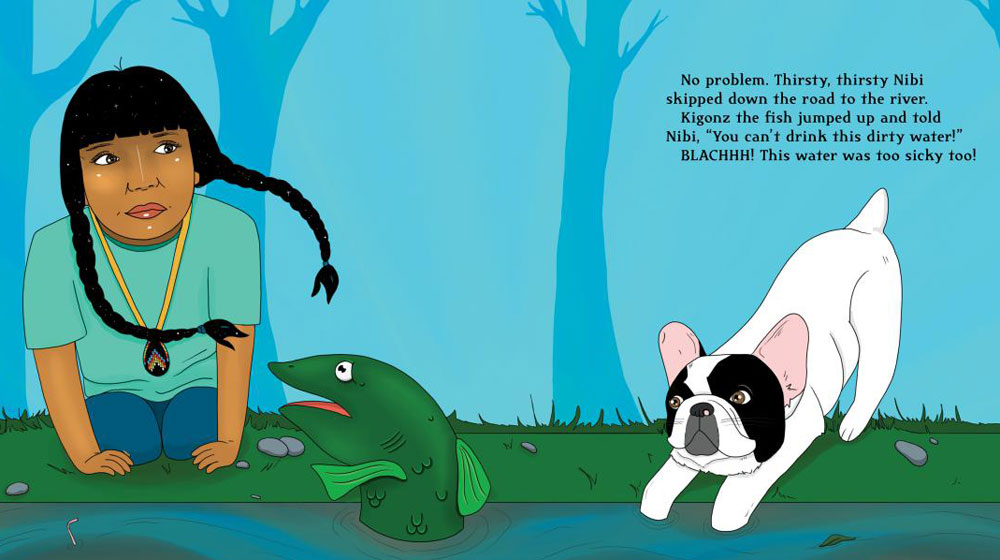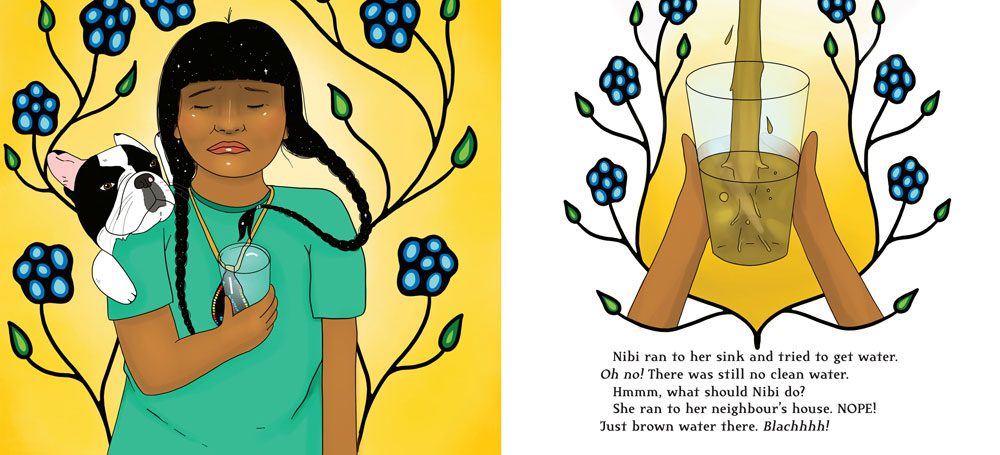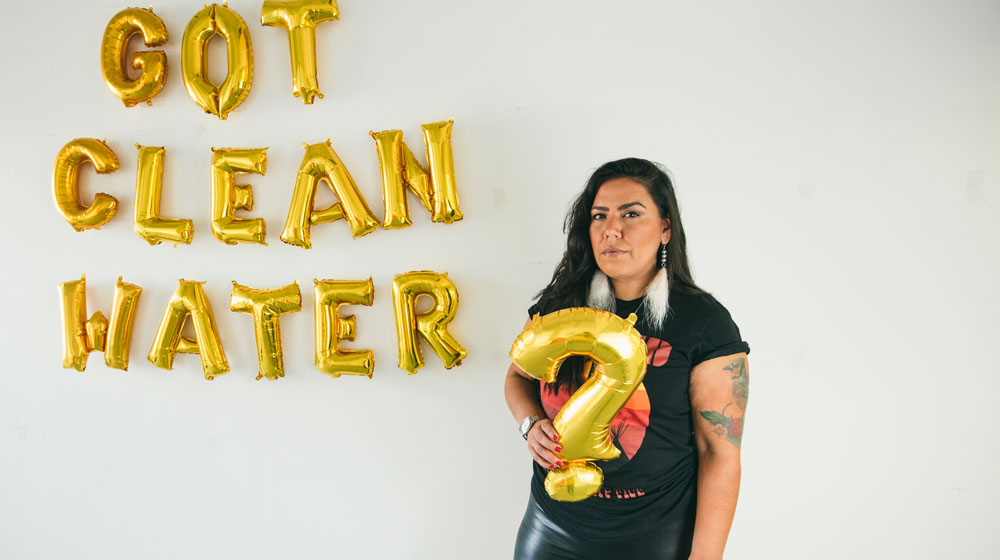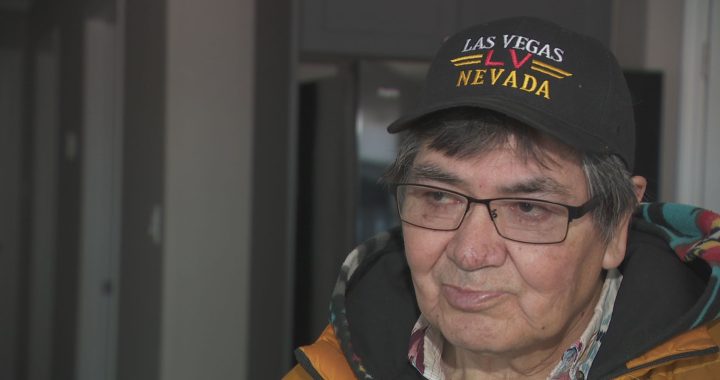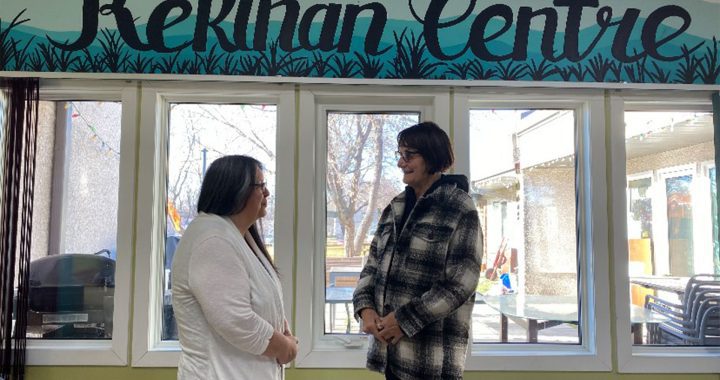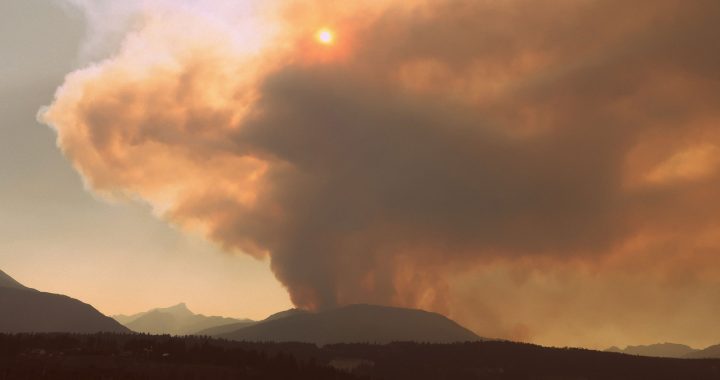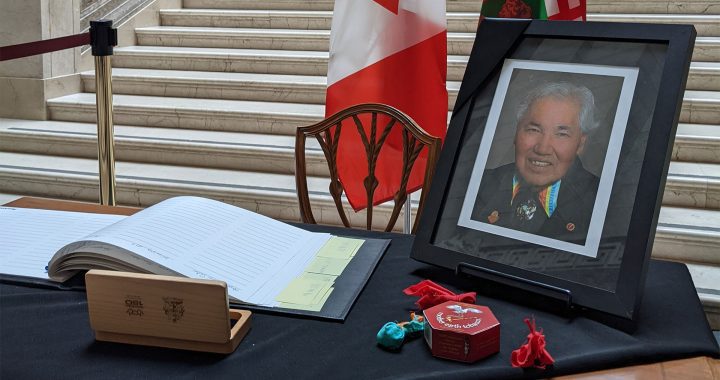
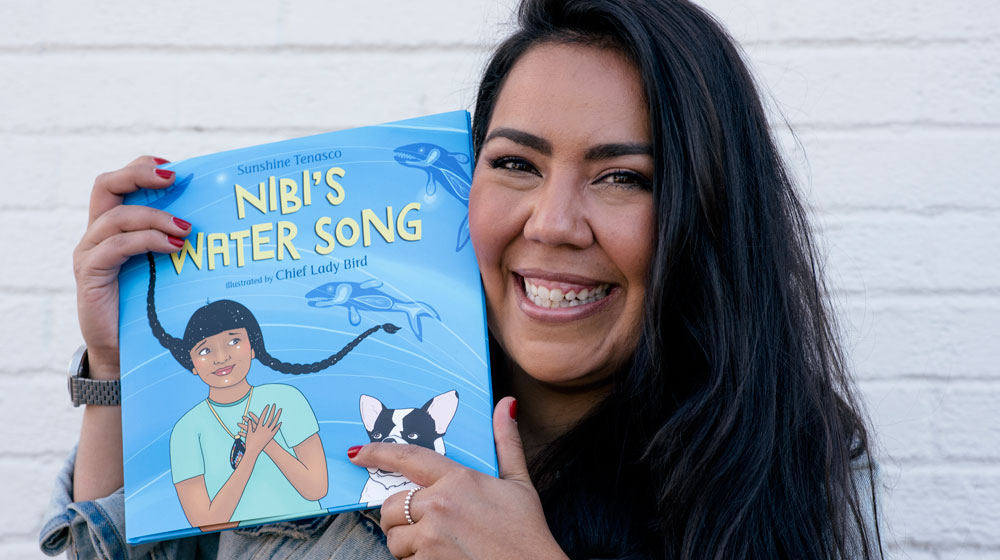
Shelby Lisk
APTN News
Nibi is thirsty – but the water in her sink is brown and the water in the river isn’t good to drink either.
What can Nibi do?
This is the opening to the new children’s book, Nibi’s Water Song.
It follows a young girl named Nibi in her search for clean drinking water.
Nibi means water in Anishinaabemowin.
Sunshine Tenasco is the author and the founder of Her Braids, an organization that sells and runs workshops to make beaded pendants, which you can see Nibi wearing in the book.
The pendants raise awareness about the clean water crisis in First Nations communities, with a portion of the funds raised going to the David Suzuki Foundation’s Blue Dot Movement.
Just like the little girl in the book, Tenasco took on the crisis with spirit and optimism, deciding to do something, even if she was only one person, because she believes that even one voice can make a difference.
In the book, Nibi goes to the shiny houses in the next community and asks for water. A woman in a nice house gives her a plastic water bottle and sends her on her way.
She finishes the bottle but is still thirsty.
Tenasco says that this is a representation of the reality in First Nations communities all across Canada.
“There’s no procedure in place so every community has a different way of coping. How do we keep putting on these band aids and how is every other small town that’s not a First Nations community, how are they able to figure this out through government or whoever but we’re not?” says Tenasco.
(An excerpt from the book Nibi’s Water Song by Sunchsin Tenasco. Illustration courtesy Scholastic Canada.)
Tenasco’s community of Kitigan Zibi, the small Anishinabeg community that borders the town of Maniwaki in Que., has been without clean drinking water for 15 years.
According to a report from Kitigan Zibi and the Radiation Safety Institute of Canada, naturally occurring uranium and radium were first uncovered in groundwater in the early 1990s.
Around 40 per cent of the community is still relying on the temporary solution of having large jugs of water delivered to homes every week.
“I knew that we fell between the cracks but I didn’t know so many other communities were falling between the cracks and why isn’t every single person talking about it? That is the biggest thing. Why isn’t every school teaching this and talking about this?” asks Tenasco.
She partnered with Scholastic Canada to bring her first book to life.
Tenasco says she’d always wanted to write a children’s book, having four children of her own, and doing workshops with students in schools.
She wanted to have an age appropriate way to talk about this issue with younger children.
Having many teachers in her family and being a teacher herself, partnering with Scholastic and getting the book into the hands of teachers was very important to her.
“Teachers work hard and long and they’re underappreciated so the fact that now there’s a tool and you can talk about it in your classrooms and then when those kids are older, they’re the ones who are going to be making all the changes,” says Tenasco.
(Nibi’s Water Song by Sunchsin Tenasco. Illustration by Chief Lady Bird. Image courtesy Scholastic Canada.)
Chippewa and Potawatomi artist, Chief Lady Bird, brings the story to life with vivid colours and playfulness, even including a depiction of her own dog as Nibi’s side kick.
“I lived with Nibi for a long time before I finally built the world around her, and I found her to be so sweet and humble in her fight for clean water. She reminds me to stay kind hearted, rooted and steadfast in my day-to-day work to educate.”
After the plastic bottle of water does not satisfy little Nibi in the book, she knocks again on “the house with the green roof” but no one comes out.
Nibi knocks and knocks and knocks.
“I had to put in the house with the green roof saying like ‘hey we’re here’. This should be an equal right. This should be a human right in Canada, not just a First Nations issue.
Obviously, it’s to speak directly to parliament. That’s pretty clear,” says Tenasco about “the house with the green roof” referencing the green roofs of the Parliament buildings in Ottawa.
As of September 2019, 56 long term drinking water advisories remain in First Nations communities.
According to the government of Canada’s website, they say that all long-term drinking water advisories on public systems on reserves will be lifted by March 2021.
Their website has a list and map that shows the communities affected.
Since November 2015, 87 long-term boil water advisories were lifted under Prime Minister Justin Trudeau.
With the election around the corner, both the NDP and Green party have shared their platforms and stated that they will lift all boil water advisories if they are elected. We were unable to find the Conservative party’s platform on the water crisis.
However, Tenasco believes that change will come from the people, not the government.
“We have to be able to create change and then take it to the next level and nothing’s too small. It’s just a children’s book but it’s not just that. It’s more than that and if I do it and someone else does it and ten other people…that ripple effect is amazing,” says Tenasco.
Tenasco says that although it is a book about water, it is also about bringing to life a story about a child that looks like her and her family. She didn’t have those representations when she was growing up. She dreamed of having lighter hair and lighter eyes because that is what society taught her is beautiful. Now there are more books, toys and shows coming out that show representations of Indigenous children.
“Yes, it’s a book about clean drinking water but it’s also about remaining optimistic, to all those little brown kids out there.”
Chief Lady Bird agrees that she did not have those representations when she was growing up. This inspired her to create a representation of a playful, beautiful young Indigenous girl.
“I was inspired by all the playful, beautiful Indigenous girls who never felt represented in the media they were and are consuming,” says Chief Lady Bird. “I included my floral designs within the book because they represent growth, imagination, self-love, community care, truth and love.”
In the story book, Nibi is able to gather the community through singing and sharing her story. The lesson to children is that their voice matters and can make a difference.
“I hope that this book, and all of the other Indigenous books out there, show our young people how powerful they are… and how much they matter,” says Chief Lady Bird.
“We have to erase the divide so everyone has access to the same sort of things, basic human rights and we do that through love and singing and working together. That’s the way. End of story,” says Tenasco.
Nibi’s Water Song was released on August 28. You can find it on Scholastic’s website and across Canada at Chapters Indigo. The illustrations in the book were created by Chippewa and Potawatomi artist Chief Lady Bird. You can support and learn more about Her Braids on their website.
@shelbyliskphoto



